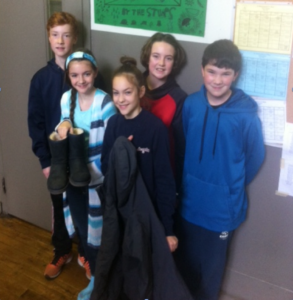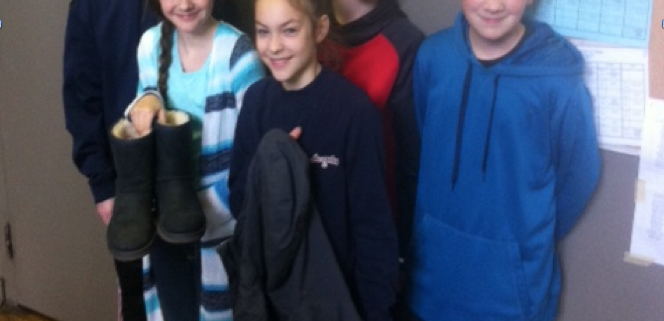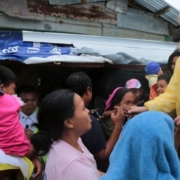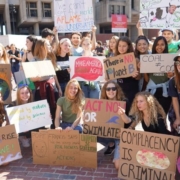The Carbon Price of our Clothing
Where were our favourite pieces of clothing manufactured? Our group had a discussion of why this was relevant to the Ignatian Carbon Challenge. Well, chances are that our clothes were made outside of Newfoundland, so to get these clothes to us fossil fuels had to be burned.
 Now, let’s start with Lauren’s coat from the well known brand ivivva. The tag said Vancouver, 7,419.1 kilometres (4,610 miles) away! However it was designed in Vancouver, but was actually made in Bangladesh 11,267 kilometres (7,000.9 miles) from St. Johns, Newfoundland!!!
Now, let’s start with Lauren’s coat from the well known brand ivivva. The tag said Vancouver, 7,419.1 kilometres (4,610 miles) away! However it was designed in Vancouver, but was actually made in Bangladesh 11,267 kilometres (7,000.9 miles) from St. Johns, Newfoundland!!!
Owen’s favourite are his shoes from Nike. His shoes were made in China, 10,452 kilometres (6,494.5 miles) away, not quite as far as Bangladesh, but nearly the same amount of pollution!
Michael likes his Air-Jordan t-shirt the best! Like Owen’s shoes, it was also made 10,452 kilometres away from St.John’s, NL.
Jack’s favourite article of clothing are his North Face gloves. They were also made in China! Wow! So much stuff is made China!! Well, it’s mostly about labor laws and the minimum wage in China, so it makes it easy for so many products to be made there.
My favourite are my Ugg boots. And guess where they were made……….wait for it……………this one’s a real shocker………CHINA!!10,452 kilometres away!!!
According to my calculations our clothes had to travel a combined distance of 49,227.1 kilometres (30,588.3 miles)!!!! Since I am not aware of how our clothing traveled (boat, plane,etc…), I can not know how much gas was burned but I do know it was A LOT!!!! Well, to help solve this problem of polluting caused by the clothes we wear we should try using hand-me-down clothes or buy clothes made in Canada. Now, it is almost impossible not to have any new clothes from other countries, but by doing these things (buying secondhand, reusing and recycling your clothes, buying local) we can reduce our carbon footprint.










Trackbacks & Pingbacks
[…] cafeteria, through a program that unites local students and farmers. In November, grade 7 students examined the carbon price of their clothing and considered ways to be more sustainable and conscious […]
Leave a Reply
Want to join the discussion?Feel free to contribute!